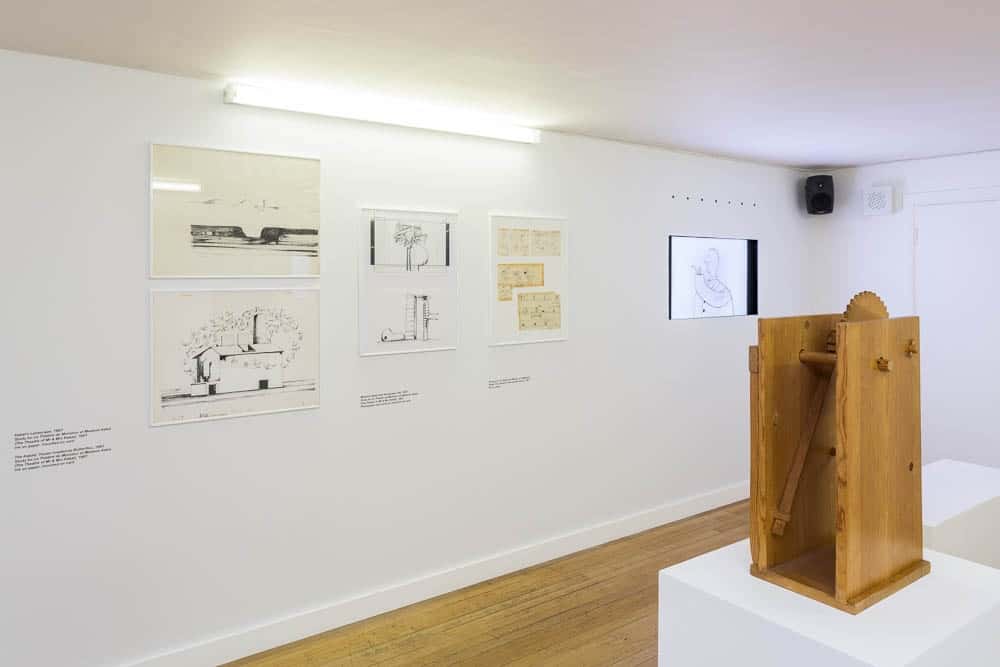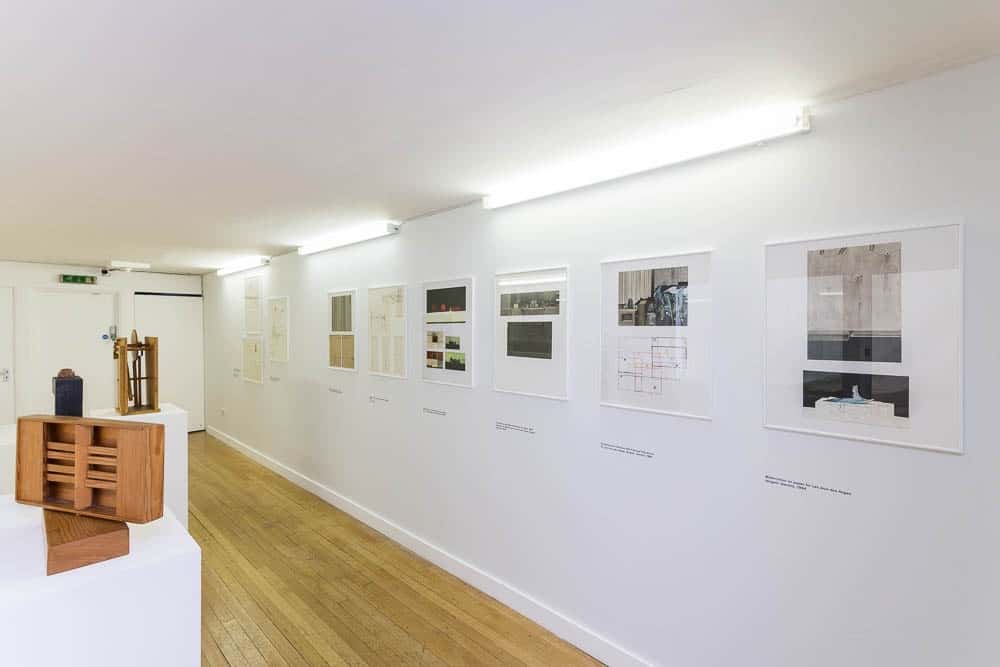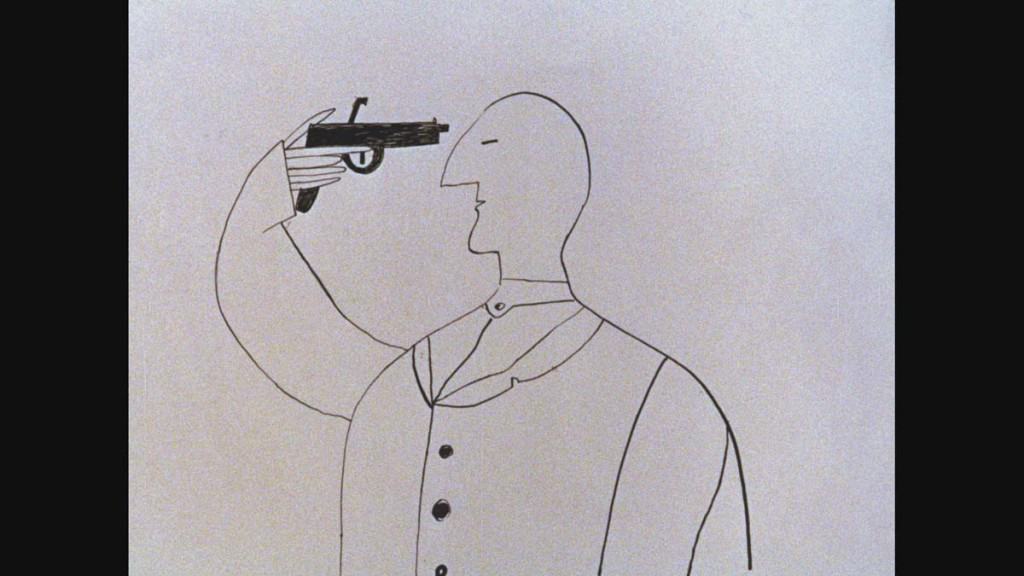The Kinoteka 12th Polish Film Festival, organised by Polish Cultural Institute in London, has just finished. A significant part of it was the ‘Cinema of Desire: Walerian Borowczyk Retrospective’ curated by Daniel Bird. Within the scope of this event 8 feature and 25 shorts films including animations were screened. It took place at the British Film Institute and at the Institute of Contemporary Art in London. ‘Borowczyk’s Film Retorspecive’ was also accompanied by two shows: the ‘Listening Eye’ at the Institute of Contemporary Arts and ‘Walerian Borowczyk – Posters and Lithography’ at the Horse Hospital.
Since 1994, when Daniel Bird came across with Borowczyk’s work he has seen greatly engaged in promoting his heritage. He has focused his efforts on restoring Borowczyk’s films, which eventually brought about the publication of the Walerian Borowczyk DVD Collection with restored output from years 1959-1984 including five feature films: ‘Theatre de M et Mme Kabal’, ‘Goto’, ‘L’ile d’Amour’, ‘Blanche’, ‘Contes Immoraux’ and ‘La Bete’, and selection of the animations. Additionally, the set includes one hour long portrait of Borowczyk. The cherry on the cake is the book edited by Daniel Bird and Michael Brooke, which includes newly commissioned essays on Borowczyk’s work and Borowczyk’s 1992 collection of short stories, translated into English for the first time.

Still from the film “La bete / The Beast,” directed by Walerian Borowczyk, 1975, photo album / East News
When I asked Daniel Bird to describe his relationship with Walerian Borowczyk, he answered: “I can’t”. His fascination with Walerian Borowczyk’s work is a long term relationship. It all started at the Stoke-on-Trent Film Theatre in 1994, when Daniel Bird saw ‘Les Jeux Des Anges’, ‘Rosalie’ and ‘Le Phonographe’ for the very first time.
Monika Waraxa: You have worked very intensively on restoring Borowczyk’s films. Where are you with that today?
Daniel Bird: We – Arrow Films, CNC, Dominique Ségrétin and myself – have produced new transfers and restorations of three Borowczyk features and twenty shorts through a mixture of private investment and crowdsourcing. None of Borowczyk’s Polish titles have been restored. This is unfortunate as Borowczyk’s collaborations with Jan Lenica are widely regarded as seminal works, not just in Poland but abroad too. ‘Dzieje grzechu’ (The Story of Sin, 1976), Borowczyk’s only Polish feature, is, for me, one of the best Polish films ever.
MW: ‘Listening Eye’ is the title of Borowczyk’s show at the Institute of Contemporary Art. Can images be symbiotic with music?
DB: We have eyes as well as ears. Borowczyk understood how sound can transform an image, and how an image can transform a sound. He collaborated with the French composer Bernard Parmegiani, who was a disciple of Pierre Schaeffer, the founder of Musique concrète. Two of Borowczyk’s films with Parmegiani, ‘Les Jeux des Anges’ (The game of Angels, 1964) and ‘Le Dictionnaire de Joachim’ (Joachim’s Dictionary, 1972) are the focus of the exhibition. There are also three of Borowczyk’s sound sculptures. This audio-visual relationship is the focus of the show – in graphics, film and sculpture.
MW: You assembled ICA show with Borowczyk’s drawings and storyboards for his animations. What was your biggest concern in doing that?
DB: Space, cost and red tape. However, we turned these limitations to our advantage. I think the show is more focused as a result. Funnily enough, the oblong box shape of the room is perfect for a Borowczyk exhibition – it even looks like one of the chambers in ‘Les Jeux des Anges’!
MW: Who else has worked with you on this show?
DB: Juliette Desorgues, my co-curator at the ICA, Paulina Latham from the Polish Cultural Institute, and Maurice Corbet from the Annecy Museum in France.
MW: Walerian Borowczyk met his wife, Ligia Branice, at the Academy of Fine Arts in Krakow. She was an actress in many of his films. Was she only his muse or rather a partner in the creative process?
DB: Borowczyk without Ligia is like Josef von Sternberg without Marlene Dietrich – she made him and he made her.

‘Walerian Borowczyk: The Listening Eye’, display view, Institute of Contemporary Arts, photo credits Mark Blow, London 2014
MW: How would you describe Borowczyk’s method of working?
DB: He thought with his hands. He had to do everything, including the sets and the props. You can see this in the three sound sculptures which are part of the exhibition.
MW: Do you like Polish filmmakers in particular or is it just that Walerian Borowczyk is your favourite one?
DB: Borowczyk was born in Poland, but from 1959 he was a naturalised French citizen. Good cinema knows no borders.
MW: What is your number one Borowczyk’s film or animation?
DB: ‘Les Jeux des Anges’. It is a short animated film. The imagery, which is often quite surreal, evokes the concentration camps. However, it is never explicit. On the one hand, it is an extremely cold and savage film, but on the other it is extremely beautiful. The exhibition features a selection of the original gouache paintings that make up the film, as well as Borowczyk’s storyboards. These, in particular, are fascinating – they reveal a lot about Borowczyk’s thought process.

‘Walerian Borowczyk: The Listening Eye’, display view, Institute of Contemporary Arts, photo credits Mark Blow, London 2014
MW: Would you describe his films as a soft porno?
DB: No. Why not explore sexuality in films?
MW: What did annihilation mean to Borowczyk and how did it influence his work?
DB: Time destroys everything, especially cinema.
Proofreading: Dr. Suzanne Mackenzie
Daniel Bird is a writer and filmmaker based in Warsaw. He has written books on Roman Polanski, and Andrzej Żuławski, and directed films about Parajanov, Vera Chytilova, amongst others. He is the co-producer of Arrow Film’s Camera Obscura: The Walerian Borowczyk Collection (coming soon). To find out more visit: Cave Canem and Boro’s Dictionrary

‘Walerian Borowczyk: The Listening Eye’, display view, Institute of Contemporary Arts, photo credits Mark Blow, London 2014
‘Walerian Borowczyk: The Listening Eye’ – Retrospective
20 May – 20 July 2014
Fox Reading Room, the Institute of Contemporary Art, London
‘Walerian Borowczyk – Posters and Lithography’
24 May – 14 June 2014
The Horse Hospital, London










